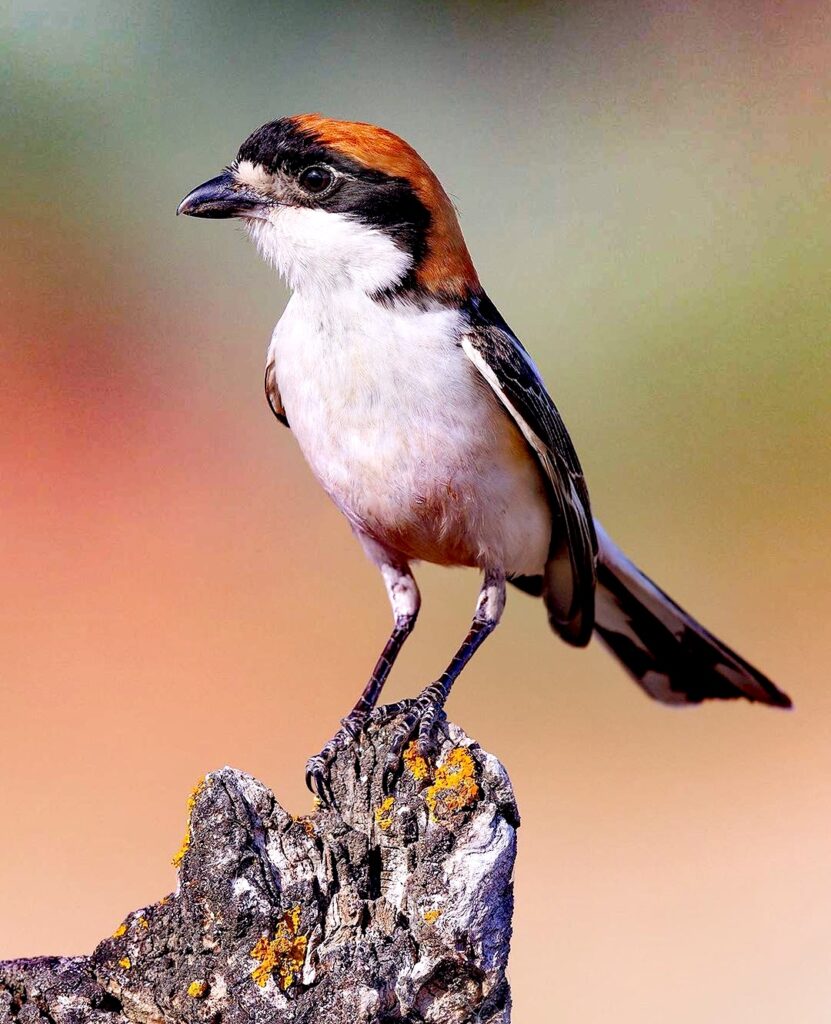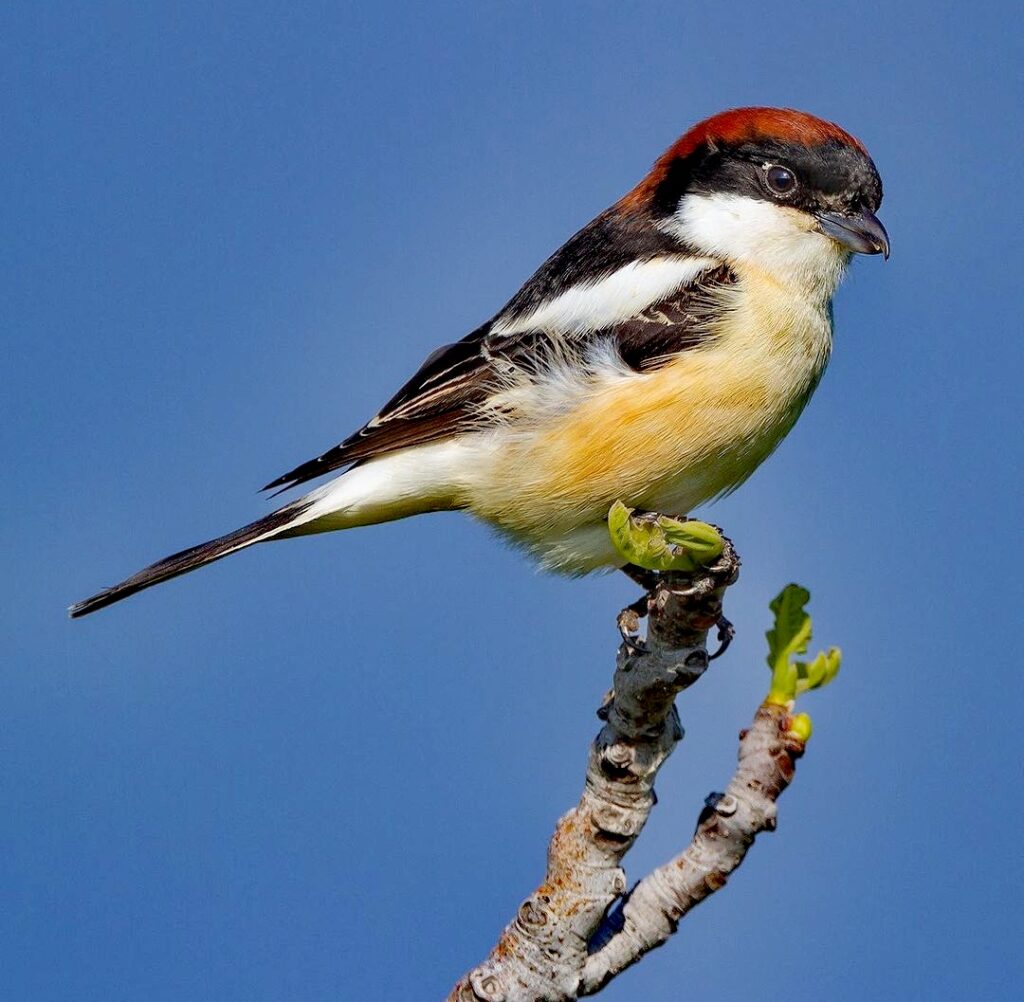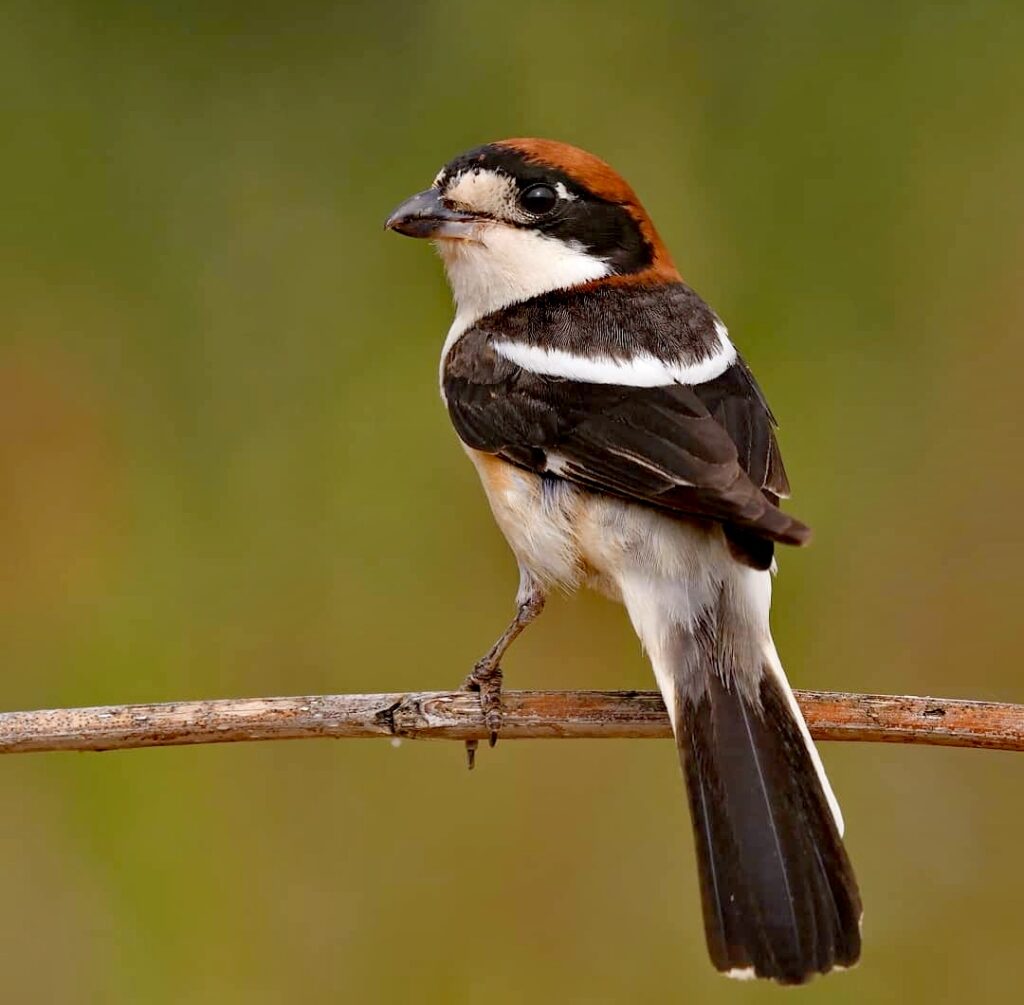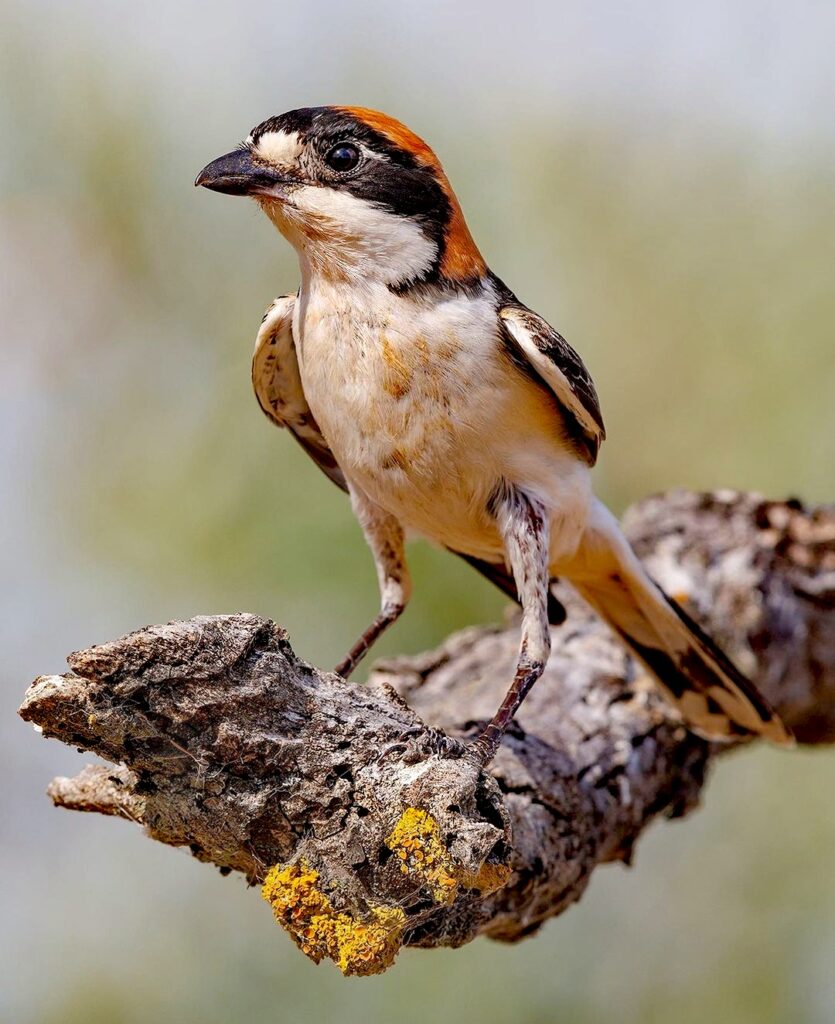WOODCHAT SHRIKE
The Woodchat Shrike is a medium-sized songbird belonging to the shrike family, is a rewarding experience for birdwatchers exploring the diverse landscapes of Morocco.


Appearance: Woodchat Shrikes are striking birds with a black mask around their eyes, a white forehead and throat, and a black band extending from the bill through the eyes to the nape. They have a gray crown, mantle, and wings, with a rufous patch on the lower back and tail. The underparts are white, and the wings display prominent white patches, visible in flight.
Habitat: In Morocco, Woodchat Shrikes can be found in a variety of habitats, including open woodlands, scrublands, savannas, and agricultural areas with scattered trees. They prefer habitats with ample perching spots and open spaces for hunting.
Diet: Woodchat Shrikes are predatory birds that primarily feed on insects, small birds, rodents, and lizards. They hunt by perching on elevated vantage points, such as tree branches or utility wires, and scanning the surroundings for prey. Once they spot prey, they swoop down to catch it with their sharp, hooked bills.
Behavior: Woodchat Shrikes are known for their predatory behavior and unique hunting technique of impaling their prey on thorns, spikes, or barbed wire. This behavior, known as “larder hoarding,” allows them to store excess food for later consumption or display to potential mates.
Breeding: Breeding typically occurs during the spring and summer months. Woodchat Shrikes construct cup-shaped nests made of twigs, grasses, and other plant materials in trees or shrubs. The female lays a clutch of eggs, usually between 4 to 7 eggs, and both parents take turns incubating the eggs and feeding the chicks.
Migration: Woodchat Shrikes are migratory birds, spending the breeding season in Europe, North Africa, and parts of Asia, and migrating to sub-Saharan Africa for the winter. During migration, they may pass through Morocco, where they can be observed in suitable habitats.
Conservation: The Woodchat Shrike is not globally threatened, but populations may face localized declines due to habitat loss, pesticide use, and human disturbance. Conservation efforts focused on habitat preservation, sustainable land management, and monitoring populations are essential for ensuring the continued presence of this charismatic bird in Morocco and beyond.


